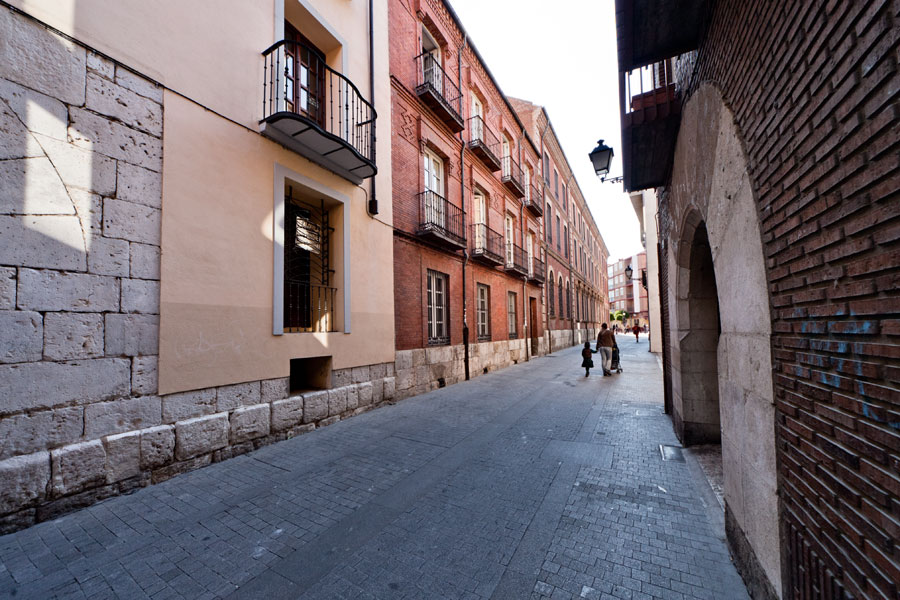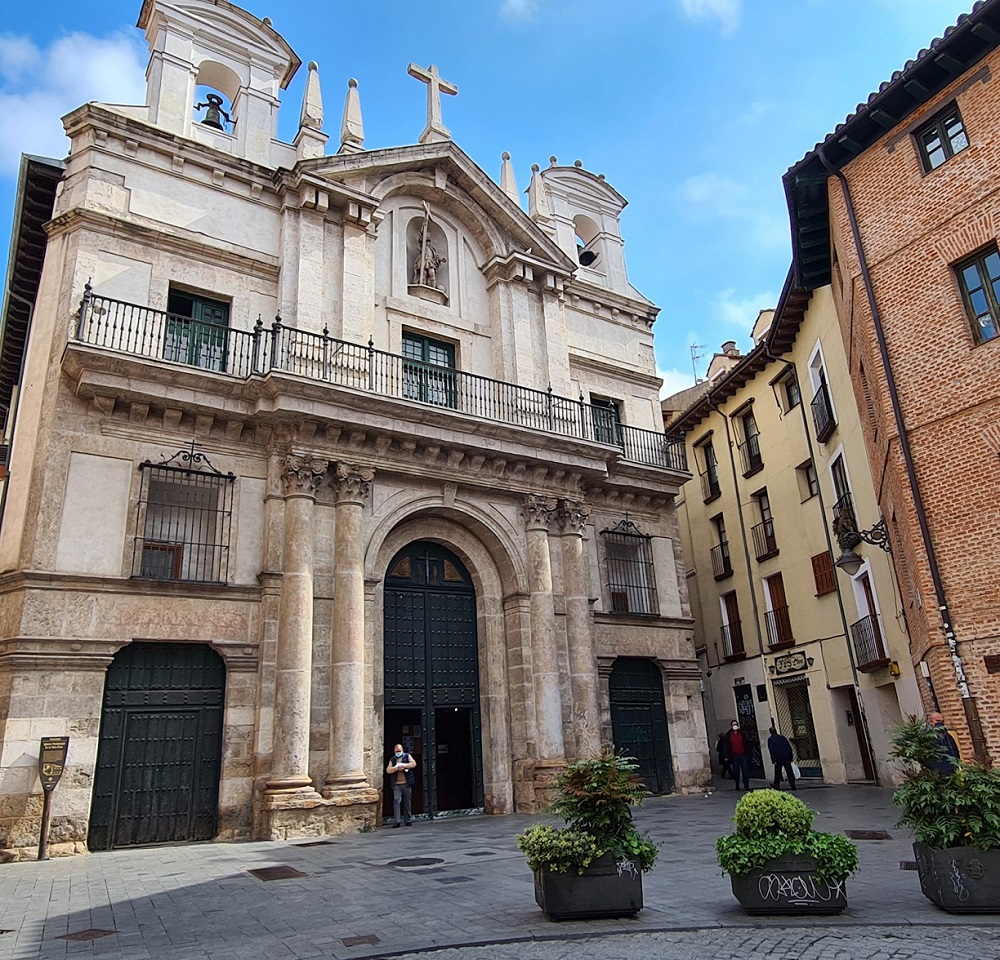Lugares - monumentos - calle Juan Mambrilla Lugares - monumentos - Iglesia Vera Cruz
Breadcrumb
Breadcrumbs
Asset Publisher
Juan Mambrilla street

On this street, among other singular buildings, are the Zúñiga Palace and the Mudarra Palace
On this street, among other singular buildings, the Zúñiga Palace stands out, located on the number 14. It is a construction of the 15th century, with a geometrical facade and the entrance with a semicircular arch, an alfiz and a coat of arms at both sides. It has an interesting courtyard with a coffered ceiling supported by octagonal pillars and wooden bases. It was the property of Alonso de Zúñiga, and Alvaro the Luna spent a night here before been brought to the Portillo Castle for his execution. The tribunal of the Inquisition was installed here. Today, it belongs to the University of Valladolid and is called Centro Buendía, which houses the Secretariat of Publications.
Another singular building on this street is the Mudarra Palace, on the number 33. It is a construction of the 16th century and currently is the Convent of Salesas. It has an interesting courtyard and its facade conserves the coat of arms of the family that ordered its construction. It is a clear example of the purest Renaissance of Valladolid.
Otro edificio singular de esta calle es el Palacio de los Mudarra, ubicado en el nº 33. Esta construcción es obra del siglo XVI, aunque actualmente ha abandonado sus funciones palaciegas y es el Convento de Salesas. Posee de su pasado civil, un interesante patio y mantiene la fachada de piedra, aún con el blasón de la familia que lo mandó construir, siendo una clara muestra del Renacimiento purista vallisoletano.Navigation Menu
Asset Publisher
Calle Rúa Oscura, 8
Asset Publisher
LOCATION
Widget tiempo Valladolid
Media Gallery
Valladolid seen through the eyes of its inhabitants and tourists
Asset Publisher
Church of the 'Vera Cruz'

Sede de la cofradía más antigua de la ciudad
It is the headquarters of the oldest penitential brotherhood of Holy Week in Valladolid, originally associated with the care of contagious patients. The members of the brotherhood commissioned the construction to Pedro de Mazuecos in 1581, who was obliged to respect and preserve the arch that existed at the end of Platerías Street on the façade.
Its current appearance is not its original one, as the church has undergone interventions such as the addition of a balcony to the façade by the prestigious Diego de Praves around 1595, as well as a nave expansion in the 17th century.
The Church of La Vera Cruz came close to disappearing on several occasions: in 1806, due to a fire; in 1936, when the City Council approved a project for Gran Vía that was never carried out; and in 1938, due to a new urban project that proposed its demolition. Fortunately, none of these plans were executed, as the view it offers from the entrance of Platerías Street creates a picturesque scene worthy of being photographed.
It houses a valuable collection of altarpieces and wooden sculptures, including those created by Gregorio Fernández, as well as a 16th-century wooden and papier-mâché float depicting "La Borriquilla." Its most emblematic symbol is the Cross of May, which carries a relic of the True Cross, and is paraded every 3rd of May.
